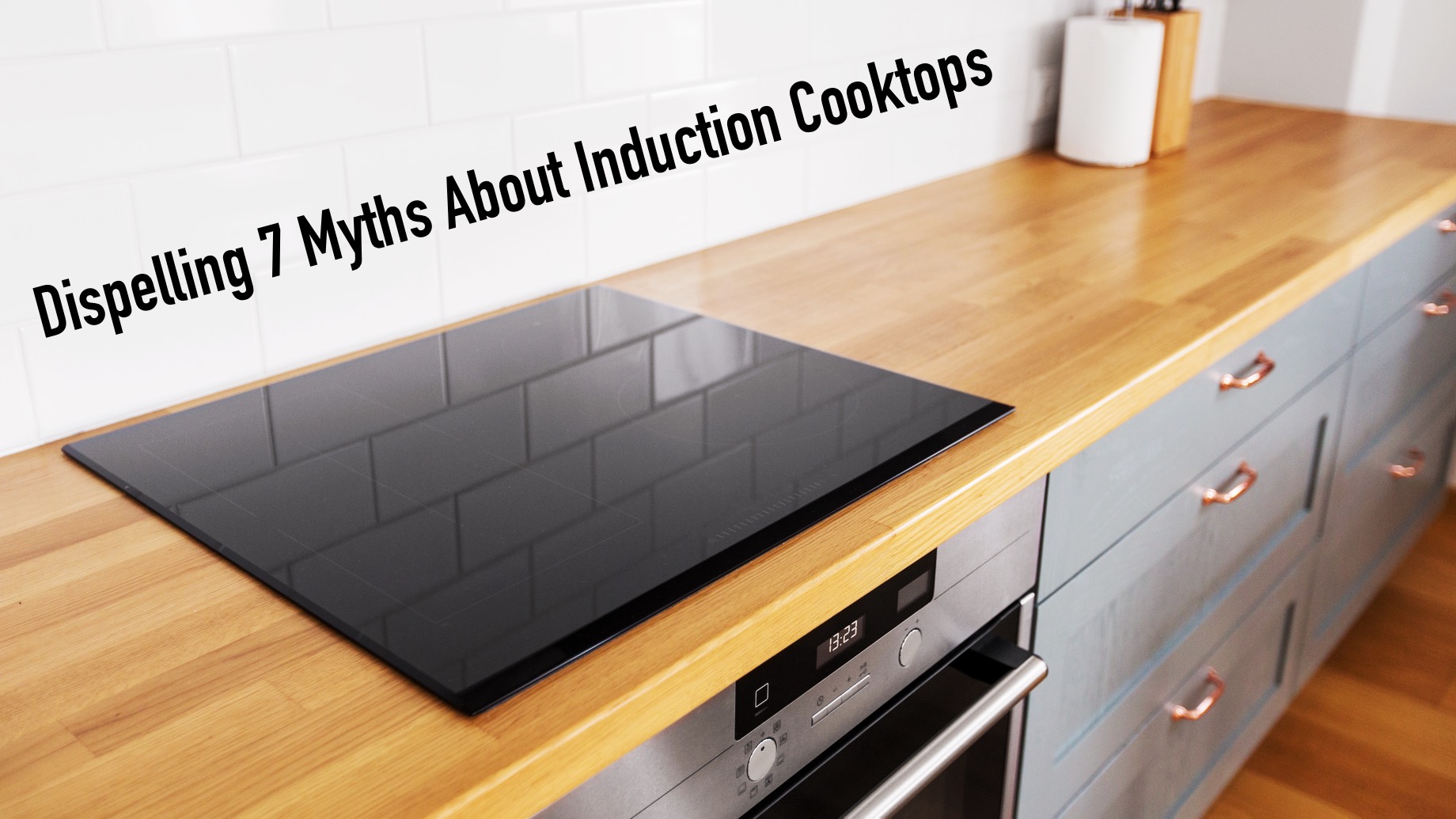
Induction cooking technology is relatively new compared to other methods of cooking.
There are many myths surrounding induction cooktops which aren’t true, but many fail to believe it.
Every cooking method has its pros and cons. Induction cooktops also have pros which many people overlook because of the myths surrounding it.
Here are seven of those myths that we dispell:
1. Induction Cooktops Aren’t Safe
In induction cooking, electricity flows through the electric coil under the glass surface of the cooktop.
Although current flows through the bottom of the pan, it is converted into heat since materials like steel are not good conductors of electricity.
Because of this, the cooktop surface doesn’t heat up and heat is transferred to the pot or pan which becomes the source of heat.
Induction cooktops are actually considered one of the safest ways of cooking food. There is no risk of burning since there is no flame and there is also no combustion, gas leaks or fuel inhalation involved.
If you accidentally forget to turn off the cooktop, it will get automatically switched off due to the presence of smart sensors.
It is scientifically proven that the magnetic field of an induction cooktop doesn’t harm human health.
2. Use Any Cookware As Long As It Is Induction Compatible
According to HomeKitchenLand, there’s a catch with induction cooktops.
You need to use special or induction compatible cookware with induction cooktops. If the cookware is non magnetic, the current won’t transfer.
Usually copper and aluminium pans are not compatible since they don’t have magnetic materials.
Since the material of the pan is responsible for even heating, a surface will be evenly heated only if the cooking pan you use is made from good quality alloys, cast iron or other ferromagnetic materials.
Even if the cookware is induction compatible on the label, make sure it is from a reputable company or brand. Bad quality induction cookware will interfere with even heating.
3. Induction Cooktops Are Similar To Microwaves
There is a big difference between the way induction cooktops and microwaves heat food.
An induction cooktop heats the pan by heating the embedded steel plate at the bottom of the vessel. This in turn heats the food. The evenly heated surface helps in even cooking or searing of the food.
Microwaves heat the food by exciting the water molecules present in it by radiating high frequency radiating waves.
In induction cooktops, only induction compatible pans with magnetic materials can be used.
On the other hand, glass, ceramic and silicone containers can be used in microwaves.
Metallic containers are not usually considered safe.
4. Circles On The Bottom Of The Induction Pan Must Be Similar In Size To The Induction Coil
As long as the bottom of the pan is made from induction compatible materials, the size of the circles don’t matter.
However the pan must not be too big or too small for your induction cooktop.
5. Induction Cooktops Are Expensive
Induction cooktops usually require a higher investment than gas or electric stoves but you end up saving a lot of money in the long run.
Induction cooktops are more energy efficient since they use 85-90% of the energy they generate. Electric stoves use about 40-50% and gas stoves use only about 35-65%.
Considering this fact, you will be spending less money on fuel and electricity if you use induction cooktops.
6. All Induction Cooktops Make A Loud Noise
This is not completely true.
The amount of noise generated will depend on the quality of the induction cooktop.
Some factors that affect the noise are the surface it is placed on and the sensitivity of the cooktop.
Majority of the well constructed induction cooktops don’t produce noise.
7. The Glass Surface Of An Induction Cooktop Breaks Easily
The glass tops used for induction cooktops are very strong and durable.
They can withstand a lot of weight and pressure; and are tested to meet certain standards.
Make sure you go for cooktops which have ceramic glass tops.
Conclusion
Before you invest in an induction cooktop do proper research about its pros and cons. After this, you can decide if it is the right option for you.